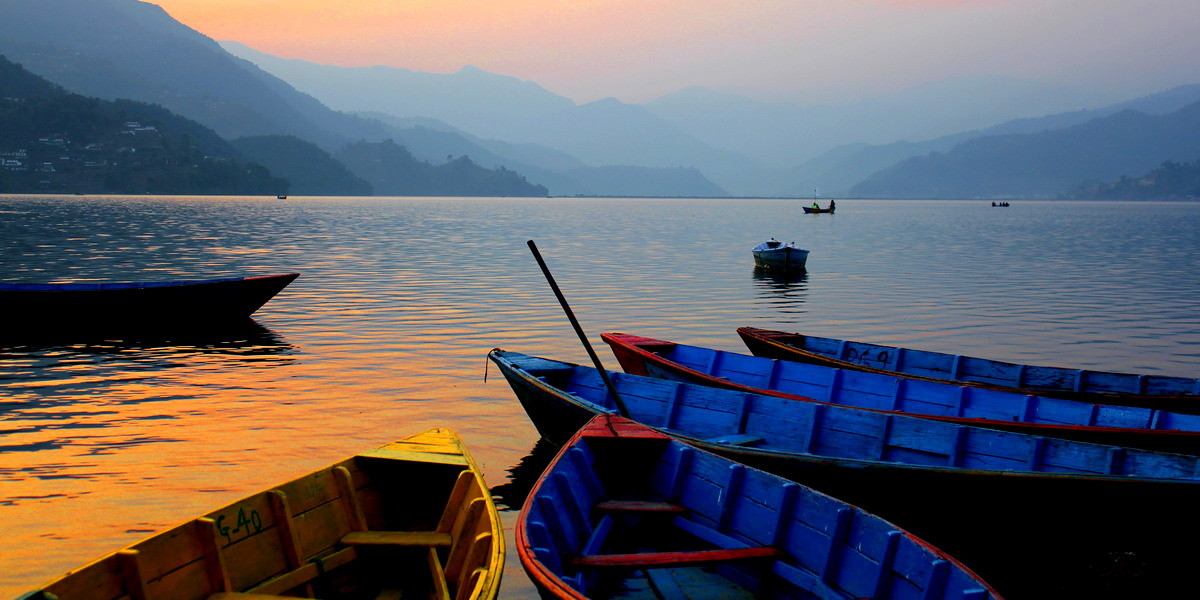Pokhara Paragliding
Pokhara Paragliding is one of the most exhilarating experiences you can enjoy in Nepal, offering a unique vantage point from which to admire the stunning landscapes of the Pokhara Valley and the majestic Himalayan ranges. Here’s a detailed look at what makes paragliding in Pokhara a must-do activity for visitors:
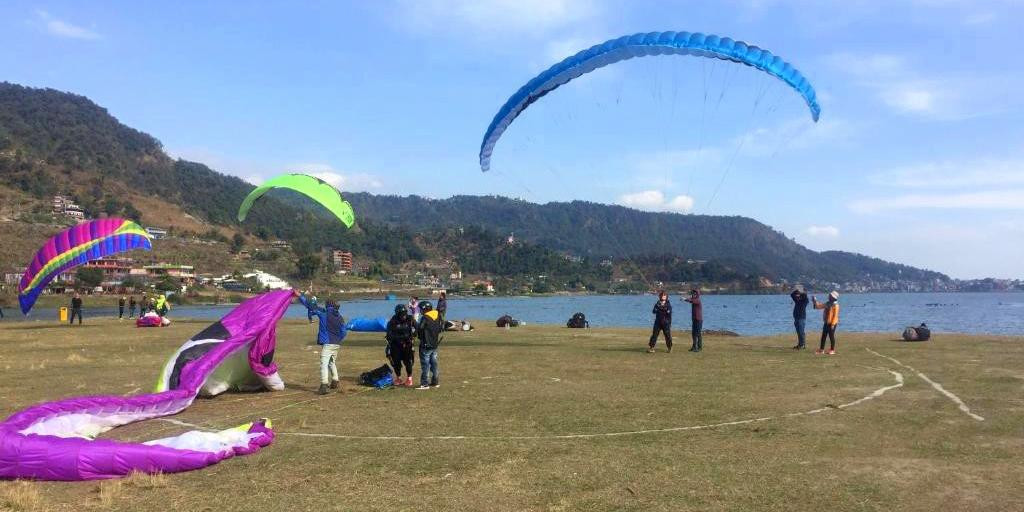
-
Ideal Location: Pokhara is nestled at the base of the Annapurna Massif, providing a dramatic backdrop for paragliding. The geography of the region creates stable thermals and predictable wind conditions, making it an ideal location for both beginners and experienced paragliders.
-
Unmatched Scenery: As you take off from Sarangkot hill, which stands at about 1,600 meters, you'll be greeted with panoramic views of the Himalayas, including peaks like Annapurna, Dhaulagiri, and Machhapuchhre (Fishtail Mountain). Below, the lush greenery of the valley and the shimmering blue waters of Phewa Lake enhance the breathtaking scenery, offering a stunning contrast of colors and textures.
-
Different Flight Options: Paragliding operators in Pokhara offer various packages ranging from tandem flights, where you glide with an experienced pilot, to solo flights for certified paragliders. Tandem flights are the most popular, allowing you to enjoy the experience with no prior training as the pilot handles navigation and safety.
-
Additional Thrills: For those looking for an added adrenaline rush, some operators offer acrobatic flying. This involves performing maneuvers such as spirals, spins, and wing-overs that make for an even more thrilling flight.
-
Safety First: Safety is a top priority for all paragliding operators in Pokhara. Pilots are highly trained and certified, and all equipment is regularly checked and maintained to international standards. Additionally, comprehensive pre-flight briefings ensure that passengers are well informed about the process and safety measures.
-
Year-Round Adventure: Paragliding in Pokhara is available throughout the year, although the best conditions are typically from September to early June. The monsoon season (mid-June to August) is less ideal due to rain and cloud cover.
-
Easy Accessibility: The launch site at Sarangkot is easily accessible via a short drive from Pokhara city center, making it convenient for travelers to fit this adventure into their itinerary.
Paragliding in Pokhara is more than just an adventure sport; it's an opportunity to see the world from a different perspective and create memories that last a lifetime. Whether you’re an adventure seeker looking to soar high above the earth or someone who wants to experience the peace of gliding through the air with stunning views, Pokhara paragliding promises an unforgettable experience.
Phewa Lake Boating
Phewa Lake boating is a quintessential experience for any visitor to Pokhara, offering a tranquil escape amidst the stunning natural beauty of Nepal’s second-largest lake. Here's what makes boating on Phewa Lake a must-do activity:
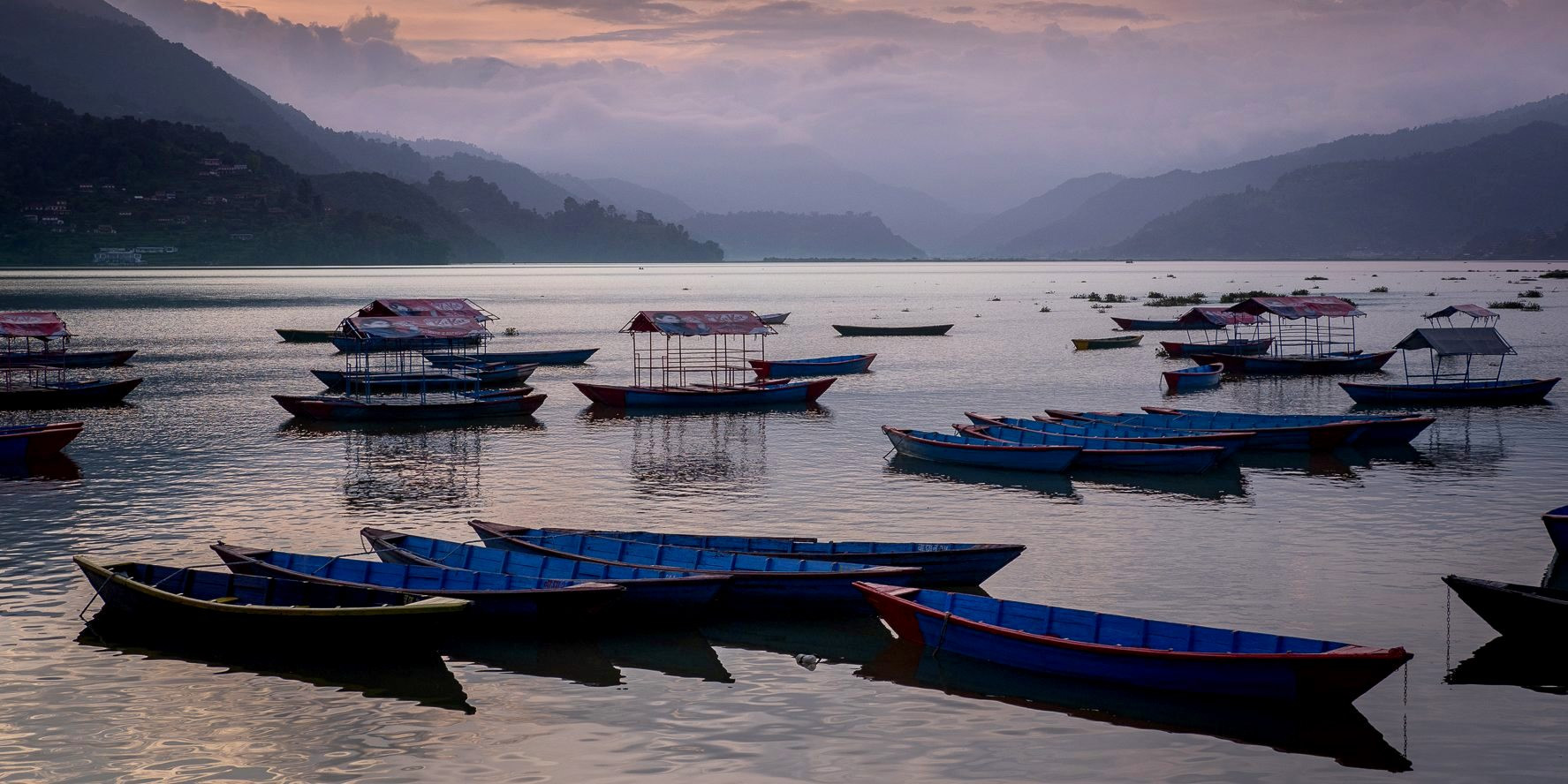
-
Scenic Beauty: Phewa Lake is surrounded by lush forests and the spectacular Annapurna range, including the iconic Machhapuchhre (Fishtail Mountain) which reflects beautifully in the lake’s clear waters. The peaceful environment and scenic views make boating here exceptionally relaxing and photogenic.
-
Boating Options: Visitors can choose from a variety of boating options on Phewa Lake. Rowboats, paddle boats, and sailboats are available for rent, allowing you to explore the lake at your own pace. You can hire a boat with a rower or choose to paddle yourself, which adds a fun and personal touch to the experience.
-
Barahi Temple: One of the highlights of boating on Phewa Lake is visiting the Barahi Temple, located on a small island in the middle of the lake. This two-story pagoda is dedicated to the boar manifestation of Ajima, the protector deity representing the female force Shakti. Visitors often stop here to enjoy the quiet and spiritual atmosphere, making it a unique cultural addition to the boating experience.
-
Accessibility: Phewa Lake is easily accessible from Pokhara’s Lakeside district, where most tourists stay. This makes it convenient to combine a boating trip with other activities in the area, such as shopping, dining, or simply walking along the lakefront.
-
Sunset and Sunrise: For those looking for even more spectacular views, early morning or late afternoon are ideal times for boating. The sunrise and sunset over the lake create stunning light conditions, with the colors of the sky and mountains reflecting beautifully on the water’s surface.
-
Bird Watching: Phewa Lake is also a great spot for bird watching. As you row across the lake, keep an eye out for various species of birds, including kingfishers, herons, and egrets, which can often be seen around the lake’s edges and on the island.
-
A Relaxing Retreat: Whether you’re an active traveler or someone looking for a peaceful retreat from the bustling city life, boating on Phewa Lake offers a perfect blend of relaxation, nature, and culture. It’s a chance to unwind, soak in the natural beauty, and enjoy a quiet moment on the water.
Boating on Phewa Lake is not just an activity but an experience that captures the essence of Pokhara’s serene beauty and provides a peaceful escape into nature. It’s an ideal way to appreciate the tranquil side of Nepal’s adventurous city.
Annapurna Circuit Trek
The Annapurna Circuit Trek is one of the most renowned and exhilarating trekking routes in the world, attracting adventurers from all corners of the globe to Nepal. This iconic trek circles the Annapurna massif, offering trekkers a unique blend of natural beauty, cultural immersion, and physical challenge. Here's what you need to know about embarking on this life-changing journey:
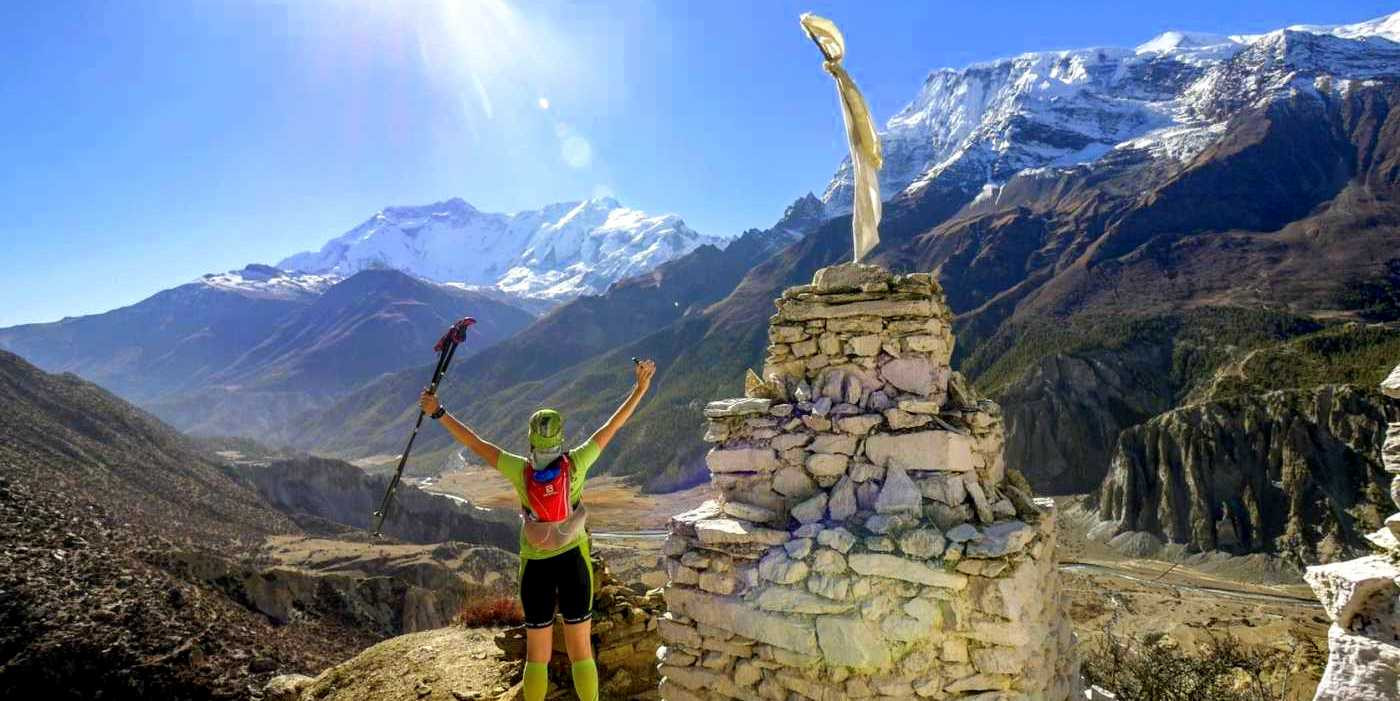
-
Scenic Diversity: The Annapurna Circuit covers a variety of landscapes, starting from lush subtropical forests and terraced rice paddies, and ascending to high alpine peaks and arid cliffs. The trek offers some of the most stunning mountain scenery on the planet, including close-up views of Annapurna, Dhaulagiri, Machhapuchhre, Manaslu, Gangapurna, and Tilicho Peak.
-
Cultural Richness: As you traverse the circuit, you'll pass through diverse ethnic communities, including Brahmin, Chhetri, Tibetan, and Gurung villages. This trek is not just a physical journey but also a cultural one, giving trekkers a chance to experience the warm hospitality and rich traditions of Nepal's rural communities. Highlights include the ancient monasteries, traditional teahouses, and colorful prayer flags that mark the spiritual landscape of the region.
-
Challenging Routes: Typically, the trek takes about 12 to 21 days, depending on your pace, the specific route taken, and weather conditions. One of the highlights of the trek is crossing the Thorong La Pass, one of the highest trekking passes in the world, at an elevation of 5,416 meters (17,769 feet). The sense of accomplishment upon reaching this point is unmatched.
-
Varied Climate: Due to the vast changes in altitude throughout the trek, you’ll experience a wide range of climates, from the warm and humid foothills to the cold, dry, and thin air of the high altitudes. Proper acclimatization days are essential to adapt to the altitude and reduce the risk of altitude sickness.
-
Sustainable Trekking: As the Annapurna Circuit is one of the most popular treks in Nepal, efforts are being made to preserve its natural beauty and support sustainable tourism. Trekkers are encouraged to follow Leave No Trace principles to minimize their environmental impact and support local economies by staying in local teahouses and hiring local guides and porters.
-
Preparation and Logistics: Preparation is key for the Annapurna Circuit. This includes physical training, securing trekking permits, and deciding whether to hire guides and porters. While many seasoned trekkers do the circuit independently, a guide can enhance the experience by providing insights into the cultural and natural aspects of the trek.
-
Best Time to Trek: The best times to undertake the Annapurna Circuit Trek are during the pre-monsoon spring months of March to May and the post-monsoon autumn months from late September to November. These months generally offer clear skies, moderate weather, and the best visibility.
The Annapurna Circuit Trek is more than just a trek; it's an epic journey that offers profound insights into the natural and cultural tapestry of Nepal. Each step along this well-trodden path brings a new sight, sound, or smell, and leaves trekkers with memories that last a lifetime. Whether you are an avid trekker or someone looking to push your limits, the Annapurna Circuit promises the adventure of a lifetime.
Sarangkot Sunrise View
Witnessing the sunrise from Sarangkot is one of the most spectacular experiences you can have while visiting Pokhara. Perched on a mountainside ridge at an altitude of about 1,600 meters, Sarangkot offers panoramic views of the Annapurna Massif and is renowned for its breathtaking sunrise and sunset views over the Himalayas. Here’s what makes the Sarangkot sunrise view a must-do activity:
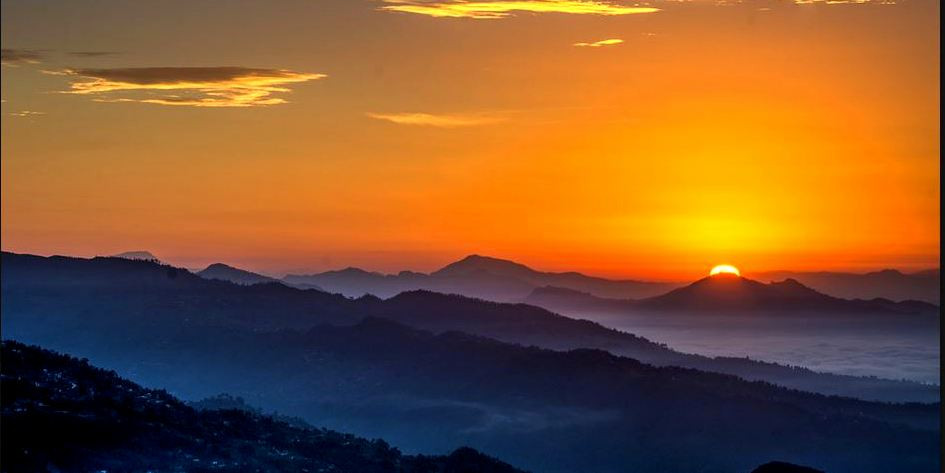
-
Unparalleled Views: As the sun rises, the sky turns a brilliant array of colors, from deep purples to vibrant oranges, illuminating the snow-capped peaks of the Annapurna range, including Annapurna South, Annapurna I, Machhapuchhre (Fishtail), and Dhaulagiri. The play of light over these towering mountains and the transformation of the sky are truly mesmerizing and offer a perfect opportunity for photographers and nature lovers alike.
-
Easy Accessibility: Sarangkot is located just a short drive from Pokhara, making it easily accessible for visitors. You can take a taxi or a private vehicle to reach the viewpoint before dawn. For those who enjoy hiking, there’s also a well-marked trail that leads up to the viewpoint, offering a refreshing early morning hike that takes about 45 minutes to an hour from the base.
-
Adventure Activities: Beyond the sunrise view, Sarangkot is also a hub for adventure sports. It is one of the top spots for paragliding in Pokhara, thanks to its ideal wind conditions and stunning aerial views of the lake and the surrounding mountains. After enjoying the sunrise, many visitors choose to take the plunge and glide down to Phewa Lake.
-
Cultural Insight: The area around Sarangkot is dotted with small villages and fields, offering a glimpse into the rural lifestyle in Nepal. Many visitors find that a walk around Sarangkot after sunrise provides a cultural insight into the lives of the local communities, adding depth to the visit.
-
Best Time for Visits: The best time to visit Sarangkot for the sunrise is during the dry seasons, from September to November and from March to early May. During these months, the skies are clearer, providing better chances of unobstructed views of the sunrise against the Himalayas.
Experiencing sunrise at Sarangkot not only allows for witnessing one of nature’s marvels but also offers a peaceful moment to reflect and appreciate the grandeur of the Himalayas. It’s an essential experience for any visitor to Pokhara, providing both natural beauty and a thrilling start to the day.
World Peace Pagoda
The World Peace Pagoda, also known as Shanti Stupa, in Pokhara is one of the most serene and sublime destinations in Nepal. Perched atop Anadu Hill and overlooking the expansive Phewa Lake, this stunning monument is not just a symbol of peace but also a viewpoint offering panoramic vistas of the surrounding landscape and the majestic Himalayas. Here’s what makes a visit to the World Peace Pagoda a must-do while in Pokhara:
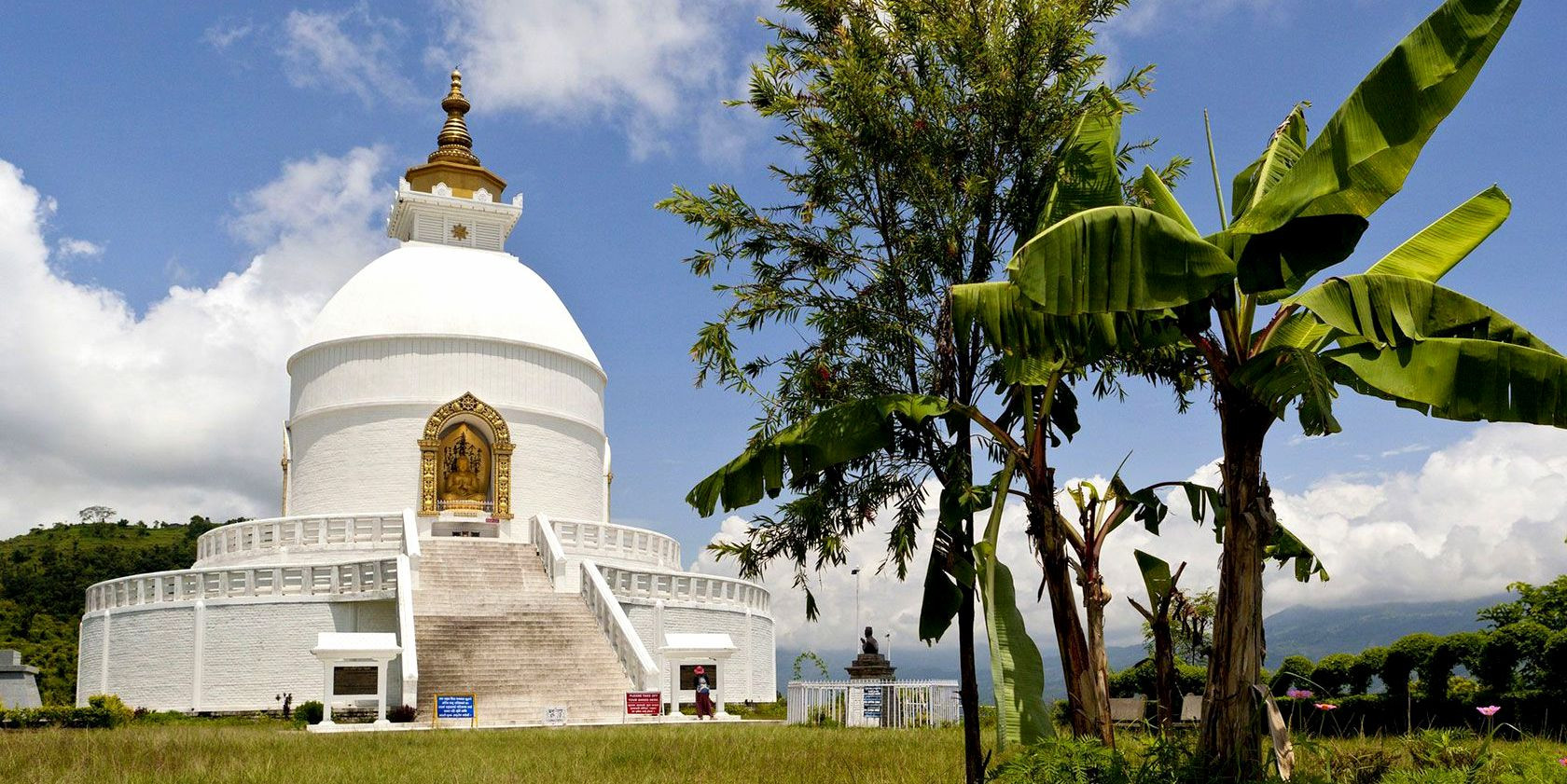
-
Symbol of Peace: The World Peace Pagoda in Pokhara is one of over 80 peace pagodas worldwide, built to inspire peace for all races and creeds. The pagoda was constructed by Buddhist monks from the Japanese Nipponzan Myohoji order and stands as a beacon of peace and hope.
-
Architectural Beauty: The structure itself is striking, with a brilliant white dome that stands out against the green backdrop of the hill and the blue of the sky. It features four statues of Buddha, each representing important events related to the Buddha that occurred in different parts of the world. The artwork and craftsmanship are detailed and add a profound cultural and spiritual dimension to the visit.
-
Panoramic Views: From the pagoda, visitors can enjoy breathtaking views of the Annapurna range, Dhaulagiri, and Manaslu, especially enchanting at sunrise and sunset. The city of Pokhara and Phewa Lake are also visible from this vantage point, providing a perfect backdrop for contemplation and photography.
-
Accessibility: Getting to the World Peace Pagoda can be a rejuvenating experience in itself. Visitors can take a boat across Phewa Lake and then hike up the hill through a well-marked forested path, which takes about 30 to 45 minutes. Alternatively, a road goes around the lake to the hill for those who prefer to drive up.
-
A Place for Reflection: The tranquil surroundings and the peaceful atmosphere of the pagoda make it an ideal spot for meditation and reflection. Many visitors spend time just soaking in the views and the quiet, taking a moment away from the busier, more commercial parts of Pokhara.
-
Eco-Tourism: The area around the World Peace Pagoda has been preserved with minimal commercial development, making it a clean and quiet retreat. It supports local eco-tourism, encouraging visitors to appreciate and respect the natural environment.
Visiting the World Peace Pagoda offers not just a break from the everyday but also a chance to experience a profound peace and spectacular natural beauty. It’s a place that combines spiritual significance with breathtaking scenery, making it a unique and memorable part of any trip to Pokhara.
Pokhara Adventure Sports
Pokhara is not only a haven for trekkers but also a hub for adrenaline junkies and adventure enthusiasts. Known as the adventure capital of Nepal, the city offers a variety of thrilling Pokhara adventure sports that cater to all levels of thrill-seekers. Here’s a guide to some of the most exhilarating activities you can indulge in while visiting Pokhara:
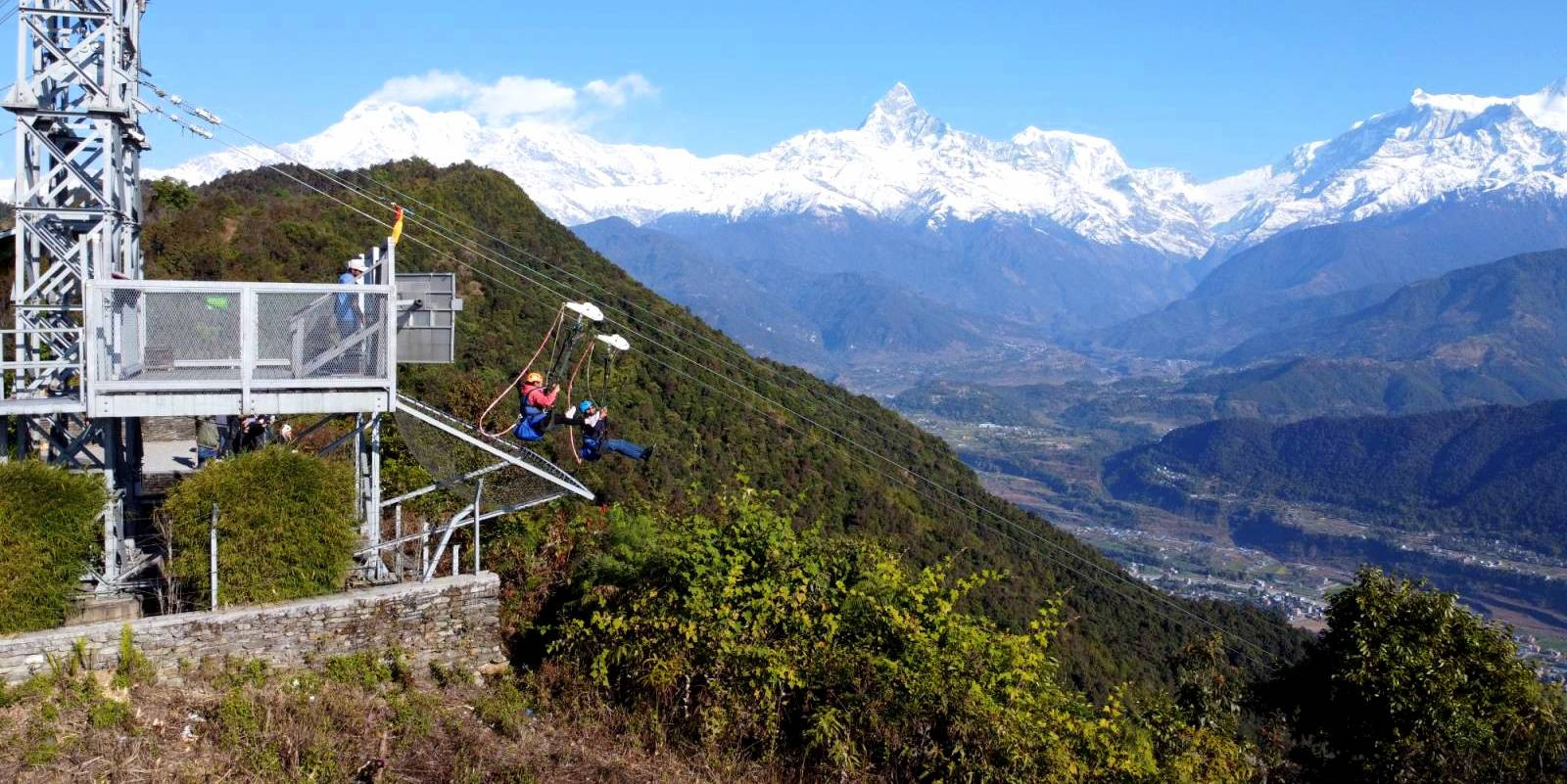
-
Paragliding: Pokhara is one of the best places in the world for paragliding, thanks to its stunning views of the Himalayas and excellent thermic conditions. Taking off from Sarangkot and floating over the beautiful Phewa Lake while surrounded by the panoramic views of the snow-capped peaks is an unforgettable experience.
-
Zip-Lining: Experience one of the world’s longest, steepest, and fastest zip-lines. The zip-line descends from the hills of Sarangkot to the plains below, reaching speeds of up to 120 km/h (75 mph). This high-speed ride provides a thrilling rush along with a unique perspective of the Himalayas and the valley below.
-
Bungee Jumping: For those who crave a heart-pounding rush, bungee jumping in Pokhara offers an exciting leap from a tower or a cliff. Feel the exhilaration of free-falling towards a river or a gorge before being softly caught by the bungee cord.
-
Ultralight Flights: Ultralight flights in Pokhara provide a bird’s-eye view of the entire region, allowing you to fly alongside the birds with the majestic Himalayas in the background. These flights offer a unique way to see the landscapes of Pokhara, including the Annapurna range and Phewa Lake.
-
Kayaking and Rafting: The rivers around Pokhara, like the Seti River, provide excellent opportunities for kayaking and rafting. These activities not only give you a thrilling experience navigating through the rapids but also allow you to enjoy the serene and pristine natural beauty of the region.
-
Mountain Biking: Mountain biking is a great way to explore the terrain around Pokhara. There are numerous trails that cater to all levels, from beginners to experienced bikers. Explore the Annapurna Circuit on two wheels or take a leisurely ride around the lakeside area.
-
Rock Climbing: Pokhara also offers several rock climbing spots suitable for beginners and seasoned climbers alike. The natural rock formations and man-made walls provide various routes and challenges that test your strength and agility.
-
Trekking and Hiking: Beyond the multi-day Annapurna Circuit and Base Camp treks, there are plenty of shorter hikes and walks around Pokhara that offer stunning views and cultural insights. These are perfect for those who want the trekking experience without committing to longer expeditions.
Pokhara adventure sports are an integral part of the excitement and allure that draw visitors to this vibrant city. Whether you're soaring through the skies or racing down a river, each activity offers a unique way to experience the natural beauty and thrilling landscape of Pokhara.
Old Bazaar Pokhara
The Old Bazaar Pokhara, also known as Purano Bazaar, offers a delightful glimpse into the city’s past with its traditional architecture, colorful shops, and vibrant atmosphere. This historic market area is a stark contrast to the more tourist-oriented Lakeside zone and provides a more authentic look at Nepali daily life. Here’s what makes the Old Bazaar a must-visit for anyone traveling to Pokhara:
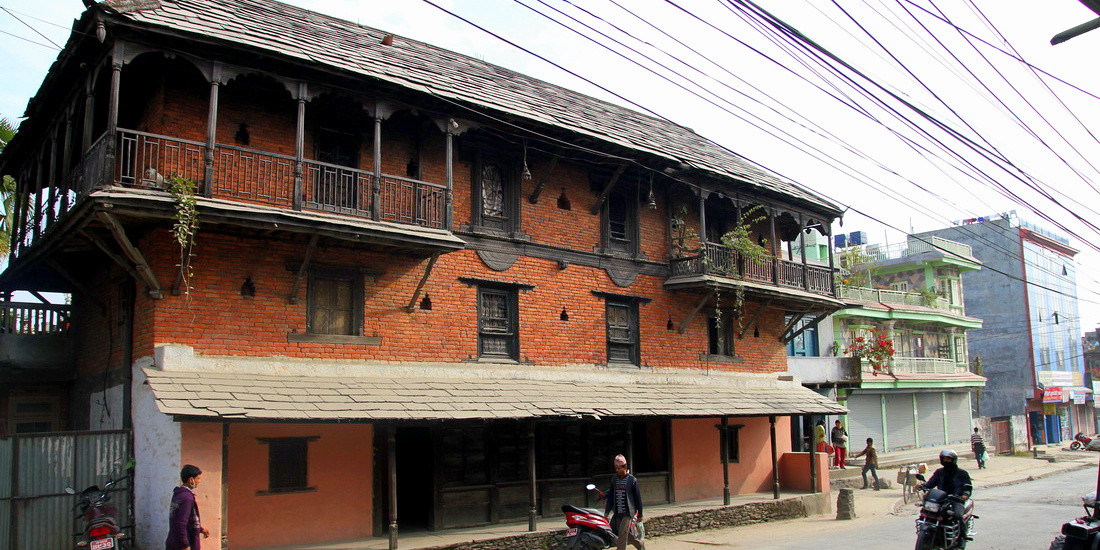
-
Rich History: The Old Bazaar is located near the center of Pokhara and has been a trading hub for centuries. This area is one of the oldest parts of the city, historically inhabited by the Newar community, known for their craftsmanship and trade skills. The architecture in the Old Bazaar reflects the traditional Newari style with intricately carved wooden windows and brick houses, which add to the old-world charm of the neighborhood.
-
Cultural Tapestry: Visiting the Old Bazaar provides a cultural immersion into the heart of Pokhara. The area is bustling with local life and activity. As you walk through the narrow alleys, you can see local artisans at work, traditional goods being sold, and hear the melodious tunes of Nepali folk music. The marketplace is a vibrant spot where locals gather, making it a perfect place to observe and participate in the daily rhythms of Nepali life.
-
Shopping: The Old Bazaar is an excellent place for shopping, especially if you are looking for authentic Nepali handicrafts, textiles, jewelry, and more traditional items that are hard to find in the more commercialized areas of Pokhara. Bargaining is common, so you can enjoy haggling over prices with friendly shopkeepers.
-
Culinary Delights: No visit to the Old Bazaar is complete without trying some local cuisine. The area offers a variety of traditional Nepali foods, including momos (dumplings), thukpa (noodle soup), and other local specialties that are both delicious and affordable. It’s a great place to explore Nepali flavors and dining customs.
-
Temples and Architecture: The Old Bazaar is also home to several ancient temples and cultural landmarks. One of the prominent features is the Bindhyabasini Temple, dedicated to the goddess Bhagwati. This temple is an important site for daily worship and religious ceremonies, adding a spiritual element to the visit.
-
Festivals and Celebrations: The Old Bazaar is particularly lively during Nepali festivals such as Dashain and Tihar. During these times, the market is beautifully decorated, and the festive atmosphere is enhanced by special events and activities that reflect the rich traditions and cultural heritage of Nepal.
-
Photography: For photographers, the Old Bazaar offers endless opportunities to capture the essence of Pokhara’s historical and cultural life. The rustic charm of the architecture and the dynamic scenes of everyday life make it an ideal place for street and cultural photography.
Exploring the Old Bazaar Pokhara is like stepping back in time. It’s a place where the heritage, culture, and soul of Pokhara are palpably felt and experienced. It offers a distinct and enriching experience compared to the more tourist-centric areas, making it a key feature in understanding the full scope of Pokhara’s identity.
Pokhara Cultural Tours
Pokhara Cultural Tours offer visitors a unique opportunity to delve into the rich tapestry of history, tradition, and daily life in one of Nepal’s most picturesque cities. These tours are not just about sightseeing but about engaging with the community and understanding the local customs, rituals, and ways of life. Here’s what you can expect from cultural tours in Pokhara:
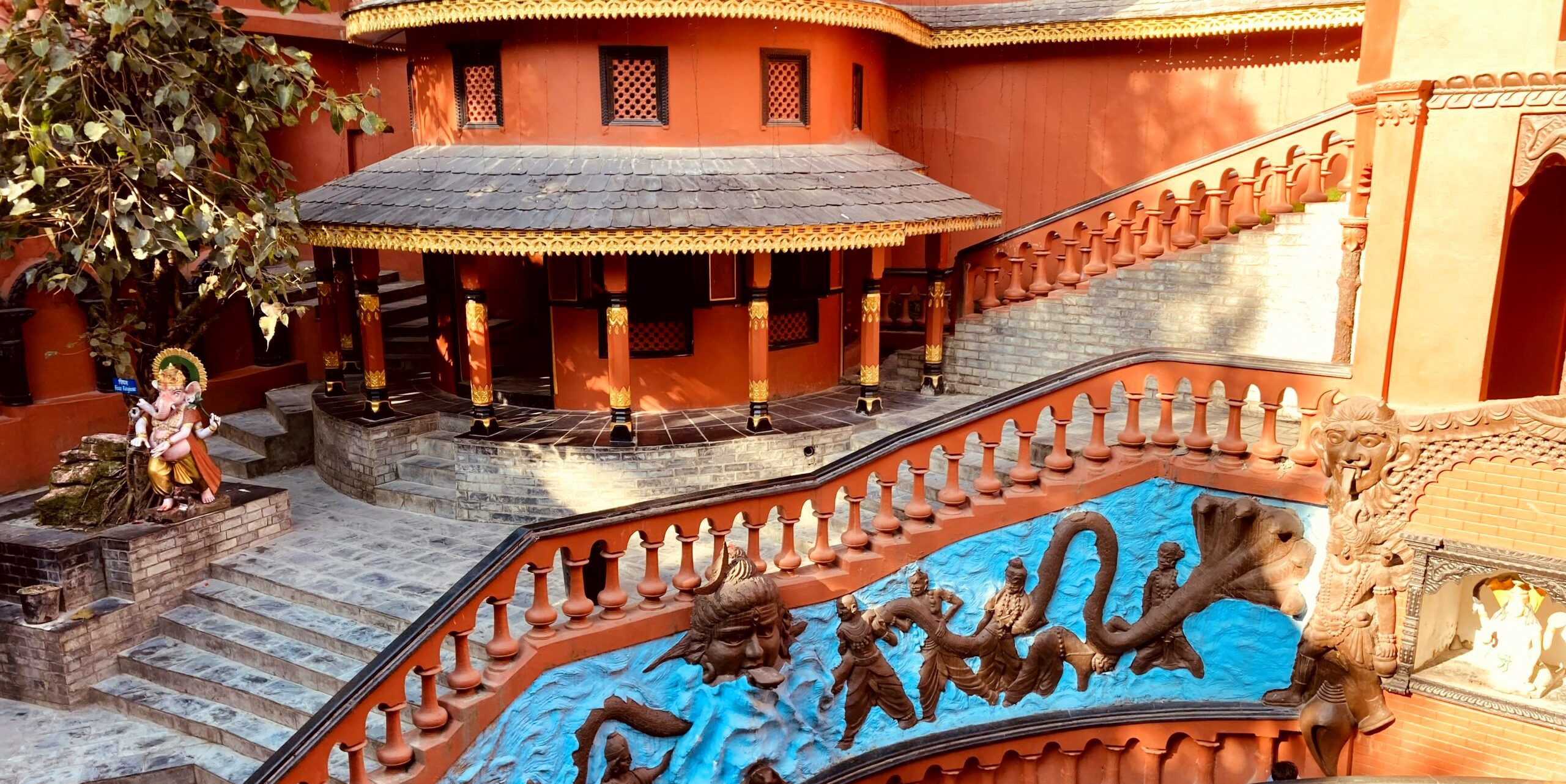
Immersive Experiences: Cultural tours in Pokhara provide an in-depth look at the diverse cultural heritage of the region. These tours often include visits to sacred sites, traditional villages, and local markets, allowing visitors to immerse themselves in Nepali culture. Experienced guides explain the significance of rituals, architectural styles, and historical contexts, enriching the visitor's understanding and appreciation.
Highlights of Cultural Tours
-
Temples and Shrines: Visiting various temples around Pokhara, like the Bindhyabasini Temple, Tal Barahi Temple, and Gupteshwor Mahadev Cave, provides insights into the spiritual life of the locals.
-
Old Bazaar Pokhara: A walk through the Old Bazaar is a journey into the past, showcasing traditional Newari architecture and the vibrant daily market life where you can observe local artisans and traditional businesses.
-
Museums: The Pokhara Museum and the Annapurna Natural History Museum offer a glimpse into the region’s ethnographic, cultural, and natural history.
-
Gurung and Magar Villages: Tours may also include visits to nearby Gurung and Magar villages, where you can experience traditional mountain life and possibly enjoy a cultural performance or meal.
-
Cultural Performances: Many tours include live cultural performances, such as traditional Nepali dance and music, which are integral to Nepali festivals and celebrations.
-
Workshops: Some cultural tours offer workshops where visitors can learn about local crafts, cooking, or even participate in a traditional Nepali dance class.
Educational Value: Pokhara cultural tours are educational, offering insights into the complexities of Nepali cultural practices and historical influences. Guides often share stories and folklore that bring the history of the region to life, making these tours both informative and entertaining.
Personal Connections: These tours often facilitate personal interactions with local residents, offering a chance to converse with locals and hear their stories firsthand. Such interactions can be profoundly rewarding, offering a deeper connection to the place and its people.
Customizable Itineraries: Many tour operators, including Relax Getaways, offer customizable itineraries, allowing visitors to choose specific areas of interest, whether it’s focusing more on historical sites, nature, or local crafts and arts.
Best Time for Cultural Tours: While cultural tours can be enjoyed year-round, visiting during a local festival can be particularly rewarding. Festivals such as Dashain, Tihar, and the New Year celebrations of different ethnic groups provide a vibrant backdrop to any cultural tour, filled with activities and celebrations.
Pokhara Cultural Tours are an excellent way to gain a deeper appreciation of Nepal’s rich cultural mosaic. They offer a blend of historical exploration, community interaction, and personal growth, making them a must-do for any traveler seeking to experience the heart and soul of Pokhara beyond its natural landscapes.
Himalayan Views from Pokhara
Pokhara, nestled at the base of the majestic Himalayas, offers some of the most stunning mountain views in the world. The city itself serves as a fantastic vantage point for breathtaking views of the Himalayan ranges, making it a paradise for nature lovers and photographers alike. Here's a guide to experiencing the best Himalayan views from Pokhara:
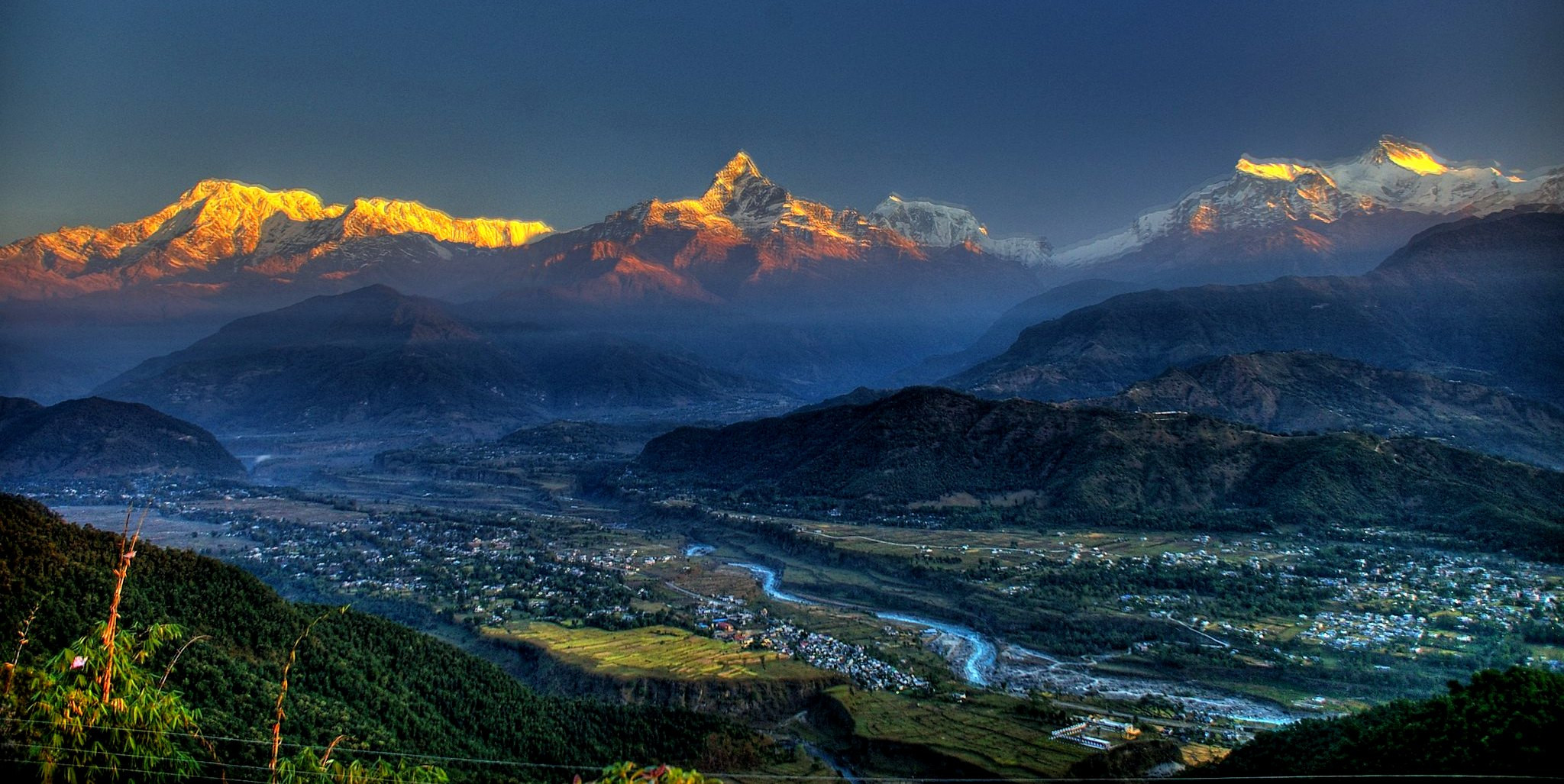
-
Sarangkot: One of the most popular spots for viewing the Himalayas is Sarangkot, located on a mountainside just north of Pokhara. It's particularly famous for sunrise and sunset views when the skies clear and the sun casts golden hues over the peaks of Annapurna, Dhaulagiri, and Machhapuchhre (Fishtail). The panoramic views from here are nothing short of spectacular, providing a dramatic backdrop that draws visitors from all over the world.
-
World Peace Pagoda: Another excellent location for Himalayan vistas is the World Peace Pagoda, situated on a hill overlooking the city. From here, you can see a sweeping view of the Annapurna range, along with a beautiful view of Pokhara and Phewa Lake below. The stupa itself is a striking white structure, offering a peaceful atmosphere for enjoying the surrounding scenery.
-
Poon Hill: While not directly in Pokhara, Poon Hill is accessible via a short trek from the city and is one of the most famous viewpoints in the Annapurna region. It's well known for 360-degree views of more than 20 high peaks, including the entire Annapurna range and parts of Dhaulagiri. The trek to Poon Hill is often included in a broader Annapurna area trekking itinerary and is highly recommended for those wanting an immersive Himalayan experience.
-
Lakeside: The Lakeside area of Pokhara itself also offers beautiful views of the mountains, especially early in the morning when the air is clear. Walking along the shore of Phewa Lake provides scenic views of the mountains reflected in the water, with the Fishtail Mountain being prominently visible on clear days.
-
Paragliding: For an adrenaline-filled perspective, consider paragliding in Pokhara. Taking off from Sarangkot, this activity offers a unique opportunity to see the Himalayas from the air, providing a bird’s-eye view of the landscape that is both exhilarating and unforgettable.
-
Ultralight Flights: Ultralight flights provide another method for experiencing the Himalayas from above. These small aircraft can take you closer to the mountain peaks, offering unobstructed views that are hard to beat. Flights typically operate early in the morning to take advantage of the best light and air clarity.
The Himalayan views from Pokhara are a central highlight for any visit to this enchanting city. Whether you choose to explore from high viewpoints, relax by the lake, or soar through the skies, the mountains offer a constant, awe-inspiring backdrop that enhances the magic of Pokhara.
Tips for Things to do in Pokhara
Planning a visit to Pokhara, Nepal, promises an exciting blend of adventure, culture, and relaxation. To make the most out of your trip, here are some practical tips for exploring the diverse range of activities available in this stunning city:
Plan According to the Weather
-
Best Seasons: The best times to visit Pokhara are during the spring (March to May) and autumn (September to November). These months offer clear skies, pleasant weather, and the best views of the Himalayas. The monsoon season (June to August) can be wet, but it also brings lush greenery and fewer tourists.
-
Daily Weather: Start activities early in the day, as mornings tend to offer clearer skies and more stable weather, especially important for activities like paragliding or mountain viewing.
Dress Appropriately
-
Layers: Weather can vary greatly throughout the day, especially if you're engaging in altitude-changing activities like trekking. Layering allows you to adjust your clothing based on weather changes.
-
Cultural Sensitivity: When visiting temples or religious sites, such as the World Peace Pagoda, dress modestly by covering shoulders and knees.
Choose the Right Accommodation
-
Lakeside vs. City: Staying near Phewa Lake (Lakeside area) offers easy access to restaurants, shops, and beautiful lake views, making it ideal for those wanting convenience and scenery. Staying in the city might be better for cultural experiences and local interactions.
Respect Local Culture and Environment
-
Cultural Etiquette: Always ask for permission before taking photos of locals or religious sites. Learn a few basic Nepali phrases to show respect and enhance your interaction with local people.
-
Environmental Conservation: Follow the “leave no trace” principles, especially while trekking. Dispose of waste properly and support eco-friendly initiatives.
Explore Beyond the Tourist Traps
-
Old Bazaar: Visit the Old Bazaar for a more authentic market experience compared to the more tourist-focused Lakeside market.
-
Local Villages: Consider guided tours that explore local villages around Pokhara, where you can experience daily Nepali life and traditional customs.
Stay Active and Engaged
-
Adventure Sports: Pokhara is a hub for adventure sports; try paragliding, ultralight flights, or zip-lining for breathtaking views of the landscape.
-
Trekking: Even if you’re not up for a long trek, consider shorter hikes like the one to the World Peace Pagoda or around the Sarangkot area for spectacular views and physical activity.
Be Prepared for Trekking
-
Permits and Guides: Ensure you have all necessary permits and consider hiring a guide for longer treks like the Annapurna Circuit. Guides not only ensure safety but also enrich your experience with their knowledge of local flora, fauna, and culture.
-
Equipment: Rent or buy proper trekking gear in Pokhara. Many shops offer everything from hiking boots to backpacks at reasonable prices.
Health and Safety
-
Stay Hydrated: Keep hydrated, especially while trekking or engaging in physical activities.
-
Altitude Sickness: Be aware of altitude sickness symptoms and acclimatize properly during high-altitude treks.
Insurance
- Adventure Coverage: Ensure your travel insurance covers adventure activities if you plan to engage in sports like paragliding or trekking.
Following these tips can help you have a safe, enjoyable, and culturally respectful visit to Pokhara, allowing you to fully embrace the natural beauty and cultural richness of this unique Nepali city.
Pokhara is a dynamic blend of adventure, culture, and serene beauty, making it a must-visit destination in Nepal. From the thrill of Pokhara paragliding and peaceful Phewa Lake boating to immersive Pokhara cultural tours, the city offers a rich palette of experiences. Whether you're watching the sunrise from Sarangkot or exploring the historic Old Bazaar, Pokhara provides a unique mix of activities that cater to all tastes and preferences. Each visit promises memorable experiences and breathtaking views, ensuring that every traveler leaves with a lasting impression of this enchanting city.
FAQs for Things to do in Pokhara
Q: What are the top activities to do in Pokhara?
A: The top activities in Pokhara include paragliding in Sarangkot, boating on Phewa Lake, trekking the Annapurna Circuit, visiting the World Peace Pagoda, and exploring the Old Bazaar.
Q: Is Pokhara good for adventure sports?
A: Yes, Pokhara is known as the adventure capital of Nepal, offering a range of activities such as paragliding, zip-lining, bungee jumping, kayaking, and ultralight flights.
Q: How many days do I need to explore Pokhara?
A: While you can get a taste of what Pokhara has to offer in a couple of days, ideally spending at least 3-5 days allows you to enjoy both the natural beauty and cultural experiences without rushing.
Q: What is the best time of year to visit Pokhara?
A: The best times to visit are during the spring (March to May) and autumn (September to November) months when the weather is clear and dry, providing the best conditions for outdoor activities and mountain views.
Q: Can I visit Pokhara with family?
A: Absolutely, Pokhara is family-friendly with activities suitable for all ages, including boat rides on Phewa Lake, visiting the butterfly museum, and gentle walks around the lakeside.
Q: Do I need a guide for trekking in Pokhara?
A: While many treks can be done independently, hiring a guide can enhance your trekking experience by providing insight into local culture, ensuring safety, and helping with route navigation, especially on longer treks like the Annapurna Circuit.
Q: What should I pack for a trip to Pokhara?
A: Essentials include comfortable walking shoes, warm clothing for evenings, a raincoat if you're visiting during the monsoon season, a daypack for hikes, sunscreen, and a camera. If you're planning on trekking, proper trekking gear is recommended.
Q: Are there cultural norms I should be aware of when visiting Pokhara?
A: Yes, it’s important to dress modestly, especially when visiting religious sites. Always ask permission before taking photos of locals, and it’s considered polite to remove your shoes before entering someone's home or a temple.
Q: How can I get to Pokhara from Kathmandu?
A: Pokhara is accessible from Kathmandu by road and air. The road journey takes about 6-7 hours by bus or car, and there are multiple daily flights which take about 30 minutes.
Q: Is it safe to travel in Pokhara?
A: Pokhara is generally safe for travelers. However, as with any travel destination, it’s wise to take standard safety precautions, such as safeguarding your belongings and staying informed about local conditions.
For the Nepal tour, please click here.
If you are looking for different kinds of Nepal Tours or Trekking Packages, feel free to contact us.
